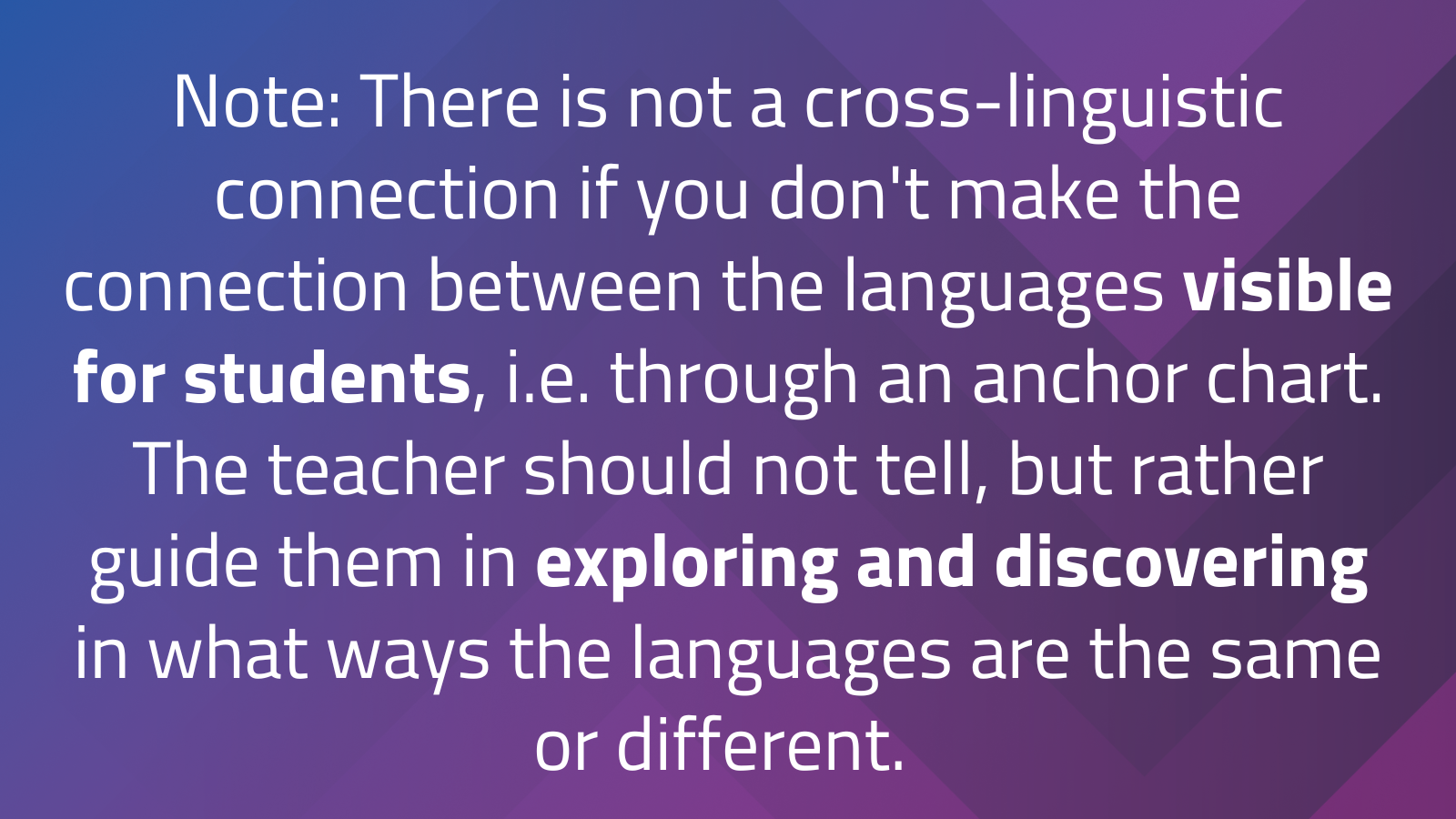Boost literacy by making connections between languages
Discover the benefits for Emergent Bilinguals of building awareness of connections and similarities between their home language and English.
Education is filled with simultaneous learning: teaching multiple subjects throughout each day, introducing reading and writing together, even assigning multiple tests in a week. However, language learning has traditionally been treated differently. For years, there was a belief that an English-only approach was the best way for Emergent Bilinguals (EBs) to master the language - and home language could slow down or overload the process. Luckily, we now know that one of the best ways we can support EBs is by utilizing their home language.
Dr. Sandra Mercuri is an expert author and speaker on the topic of bilingual and dual language education and the process of language development. She recently joined us on the Highest Aspirations podcast to share more about ways we can facilitate language learning through intentional, explicit instruction about all languages in a student’s repertoire. Listen to the full conversation here, or find takeaways below:
Cross-linguistic connections = the bridge
Cross-linguistic connections is a fairly new term in the field - but a familiar concept to some. If you have ever pointed out cognates in English and another language during instruction, you have made a cross-linguistic connection. These are opportunities for comparing and contrasting language, thus bridging the home language with English. By emphasizing these connections and building awareness around language, we help students discover how their existing linguistic repertoire can help them strengthen their skills in both languages. .
Examples of cross-linguistic connections include:
- Identifying and analyzing sounds in different words (Letter ‘h’ for example)
- Comparing parts of words (prefixes and suffixes)
- Highlighting common root words
- Comparing different types/structures of sentences
Avoid learning (and re-learning) in a silo
A history of English-only instruction has ingrained in many teachers the belief that allowing students to use their stronger language will hinder their English language acquisition. But one of the most important mindset shifts for educators is that it is okay and encouraged to use the two languages (English and home language) simultaneously in an strategic and intentional way
Home language does not interfere in any negative way with English learning. In fact, the many similarities between languages mean that using a home language can actually increase the rate of acquisition of a second language. When we allow students to access their full linguistic system, they can succeed as true multilingual learners.
This may feel like another thing to add to teachers’ plates or a time-consuming process. But when we build awareness of the similarities and differences across languages, there is ultimately less repetition and re-teaching because students are able to use what they already know in their stronger language, rather than learning the same concept in two language separate systems.
Try these Mini Lessons on cross-linguistic connections:
The main difference between the various mini lessons teachers can try is the resource the lesson uses. One option is to use paired texts, where students have the same text in English and another language (i.e. Spanish side-by-side). Students should have the opportunity to directly compare how the same concept is written in the two different languages, and can apply skill knowledge and meaning from the home language text to the English text (and vice versa). This is great for students whose reading level is higher in their home language to still be able to access grade level content and engage with the target language version.

Another option is focusing on the vocabulary of the content area, and re-using that academic language that has been applied and learned during math, science or social studies in a grammar lesson. For example, the teacher could select the words freezing, heating, cooling and melting, then, teach about the -ing suffix and engage the students in exploring what that looks like in Spanish (-ing / ando - endo).
These are just a few examples of how creating space to make these connections between languages can create more inclusive, culturally relevant, and supportive learning environments for all. To learn more about fostering metalinguistic awareness and the journey to biliteracy, listen to the full interview with Dr. Sandra Mercuri, download the episode transcript, and Ellevation districts can check out our Strategies Pathway: Advancing Bilingualism and Biliteracy.
